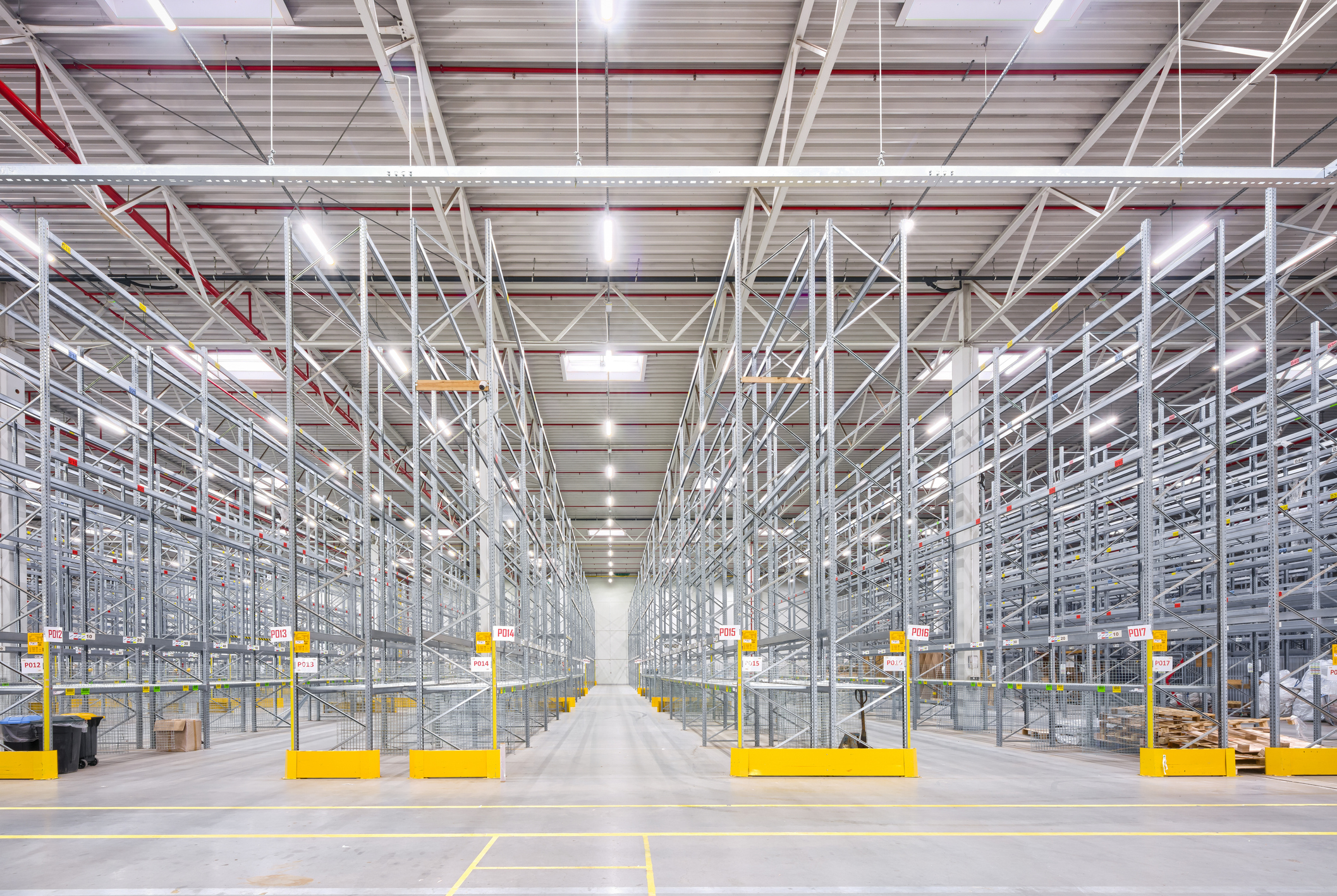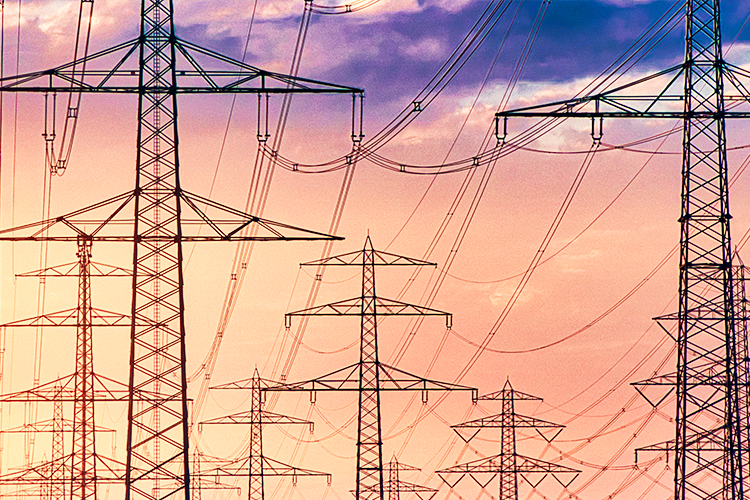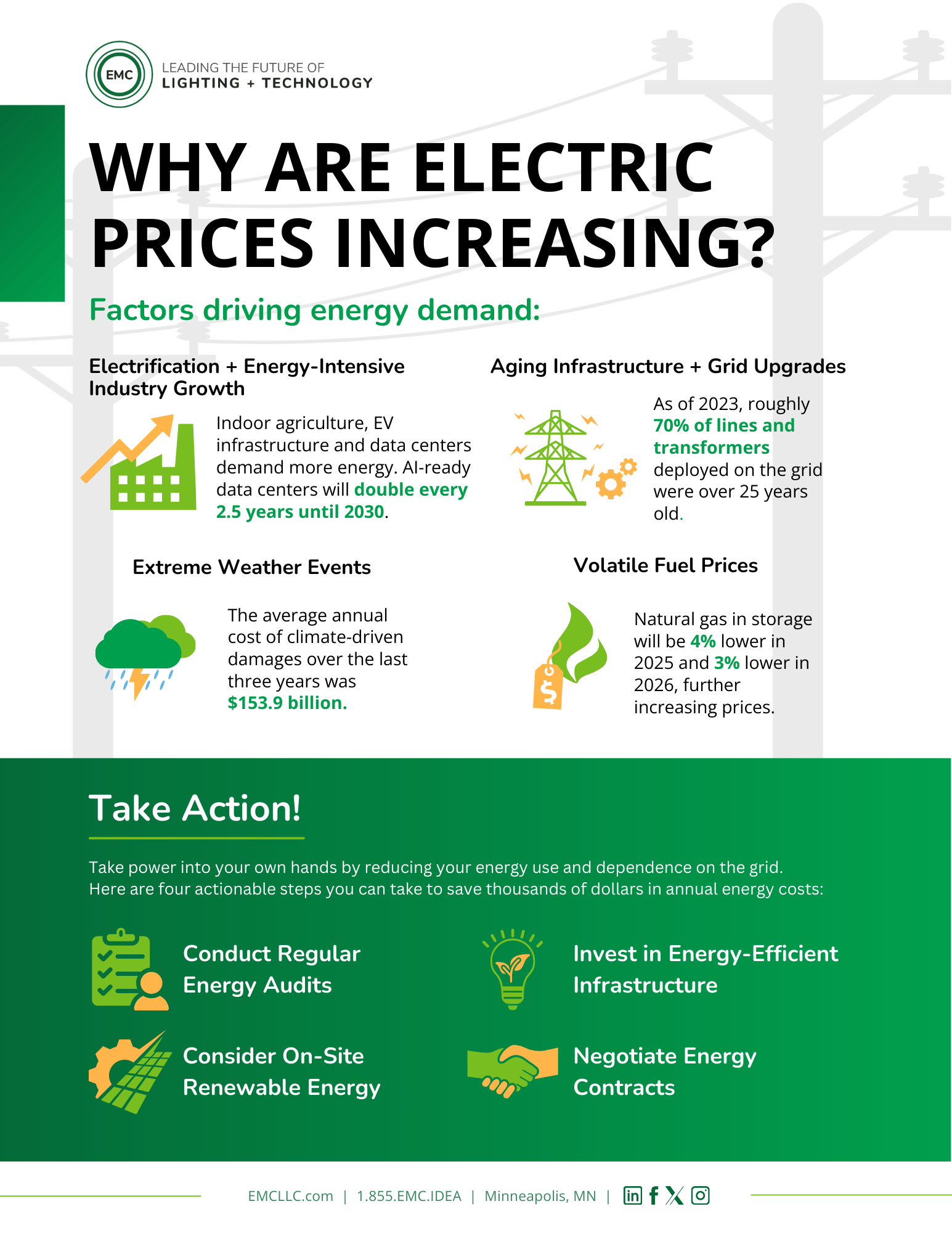Three Very Bright Reasons to Replace Your LED Lighting

If your LED system is at least seven years old, it’s time to be proactive.
Is your existing LED lighting system losing 30% or more of its output? We understand that this can be hard to gauge. After all, the human eye is only so precise. So, if your foot candle levels decreased by 1/4 of a foot candle every month for 10 years, does anybody really notice?
Most people may not notice but that decrease is already affecting your operation because your system has reached its optimal number of use hours.
The estimated lifespan of an LED lighting system is based on manufacturers’ accelerated wear testing that calculates how many hours it takes to lose 30% of its original brightness. This is known as L70, an industry standard of where the “luminous decay” occurs.
That decay can also be dictated by the quality of the original LED chip; poor heat dissipation, which can reduce the lifespan; operating conditions, including machinery and equipment that produces high amounts of heat; and fluctuations in voltage potentially caused by older buildings with outdated electrical systems.
Once your system reaches the L70 level, you need to strongly consider replacing it with an LED lighting upgrade, also known as reLED. Implementing a reLED strategy offers you multiple benefits, including that it’s more cost-effective than replacing fixtures as they fail.
#1: reLED significantly reduces energy costs.
Modern LEDs are even more efficient than legacy systems. The level of brightness that used to take 50 watts to produce can now be delivered with less than 30.
Switching out exterior LEDs saves 40% - 50% in energy costs and changing your interior LEDs can save 25% - 40%.
#2 A reLED resets your maintenance costs to zero.
When you first installed your LED system, you were suddenly paying nothing for maintenance. No need to continually roll trucks to various locations to ensure that the system is working properly.
How much are you spending on maintenance now? If you haven’t checked recently, you’re probably going to be surprised.
Upgrading your LED system can shift what you’re spending on reactive maintenance costs to planned operating costs and capital expenses where you can see better payback.
#3: A reLED restores light levels along with brand and safety compliance.
If you originally set lumen goals for your facilities, you set them for good reasons. You knew that a particular level spurred sales and enhanced the customer experience, helped productivity, or promoted safety. And if your LED system has now fallen below your original standard, it could actually be hurting your business by diminishing the customer experience and even losing sales.
If your fixtures have degraded, you can lose brightness, color can shift, and your lumens per watt output can decline significantly.
Part or all of a fixture can fail, especially if the system is more than seven years old and has been subjected to a harsh environment such as a lack of air conditioning along with high usage light fixtures.
Another very good reason to do a reLED.
Future-proofing your system and your facility is another reason a reLED is a smart investment. It’s now more affordable—and more practical—to add features such as sensors, controls, and other Internet of Things (IoT) technologies that make your operation more flexible and improve functionality
When you first switched over to LED, these features and functions were impractical and costly, but new LED lighting technology solutions have made it easier and less costly to add features and prepare your system for the future. For example, to add a Bluetooth® node to every fixture in each location would have cost around $100 each; today you can do that for around $5 a piece.
And still one more good reason to choose reLED.
You may have sustainability and carbon neutrality goals to meet, either your own or those established by government. As of 2023, nearly 100% of the S&P® 500 performed sustainability reporting. Remember, reLED saves you 40% - 50% on your exterior lighting costs and 25% - 40% on interior lighting. Now imagine what that can mean to your operation if you do that for every building. It definitely helps make significant progress to achieve your goals.
Now is the right time to plan.
As we mentioned earlier, doing a customized LED lighting installation at scale as opposed to replacing fixtures or doing a single location is your most cost-effective option.
But keep in mind that it takes time to prioritize locations for an effective rollout and put together a workable economical plan. You’ll need to know when and where you can get LED to LED incentives as well as where energy rates are highest so you can quickly maximize your savings.
EMC can help you create the best customized approach.
We help you prioritize the process.
Which locations should you reLED first? Where will you get the most energy and utility savings? EMC will assess your system and all of your facilities to ensure that you get the most from your investment, including long-term value.
Our EnergyMAXX® total project management approach delivers maximum results for each phase of the project.
Our turnkey system offers multi-site energy audits, utility rebate offers, and incentive savings for an immediate, positive bottom-line impact. EnergyMAXX® is a predictable, reportable, and transparent project management process that ensures that all objectives and outcomes are clearly defined at every stage.
Maximize the value of every utility rebate.
EMC's award-winning Incentives team evaluates thousands of rebates available nationwide. We look at programs based on timing and location and then prioritize the sites that will deliver the largest return in the shortest amount of time.
Is your lighting system more than seven years old? Then there’s no advantage in waiting for reLED.
Planning now is essential. Assessing your current situation allows you to better understand what steps to take. Finding out how our reLED upgrade solutions can make it easier, faster, and less expensive to achieve your energy efficiency and sustainability goals is what you need to do now.
If it’s time to maximize the performance of your legacy LED system, contact EMC for a consultation.


